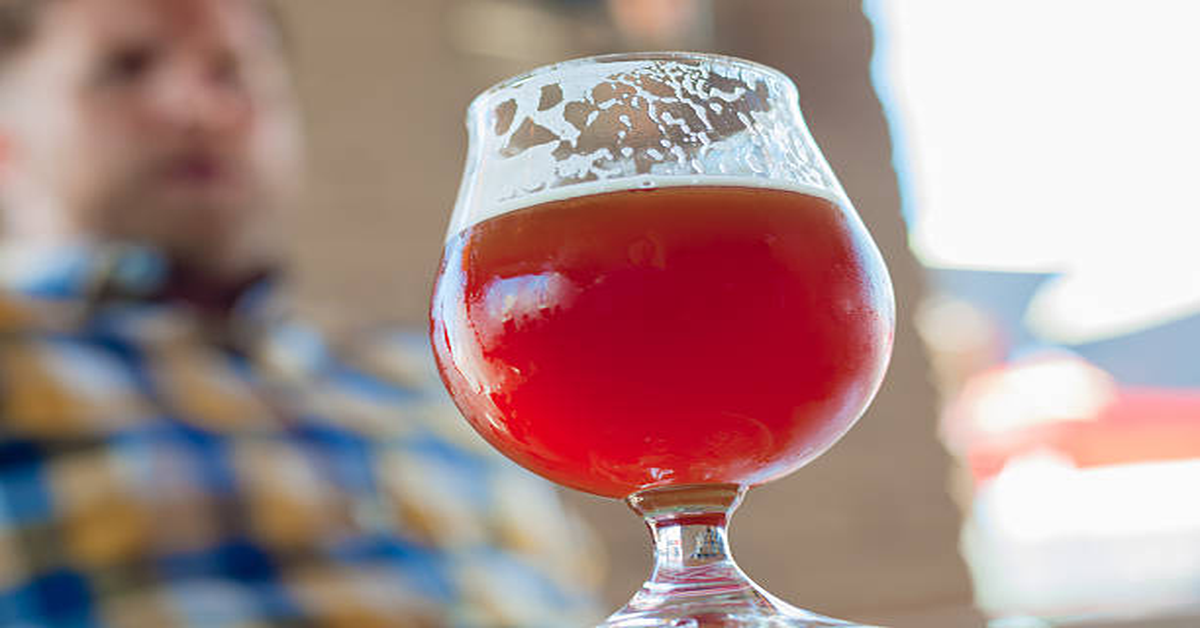Among the many beer styles celebrated around the world, few are as complex, intriguing, and refreshing as sour beer. Characterized by its distinct tangy and tart flavor profile, sour beer has captured the attention of both casual drinkers and craft beer connoisseurs. Unlike traditional beers that lean toward bitter or malty sweetness, sour beers deliver a pleasant acidity and layered complexity reminiscent of fermented fruits, wine-like sharpness, and sometimes even earthy notes.
While sour beers may seem like a recent trend in craft brewing, their history stretches back centuries. Long before refrigeration and pasteurization, wild fermentation was the norm. Many of the world’s oldest beer recipes included elements of spontaneous fermentation, giving rise to the very tart, funky flavors that define modern sour beers.
This article explores the origins, brewing methods, flavor profiles, popular styles, fermentation science, food pairings, and cultural impact of sour beer. Whether you’re new to the world of sours or a seasoned drinker seeking deeper knowledge, this guide will take you through every facet of this unique beverage.
1. What is Sour Beer?
Sour beer is a category of beer intentionally brewed to produce acidity and tartness as a dominant characteristic. Unlike typical lagers or ales, which focus on hops or malt for flavor, sours highlight lactic acid, acetic acid, and other organic compounds produced during fermentation. These acids are what give sour beers their signature sharp and tangy profile.
The key to this unique taste lies in the microorganisms used during fermentation. Instead of only using traditional brewer’s yeast (Saccharomyces cerevisiae), sour beer often incorporates wild yeast strains and bacteria such as Lactobacillus, Pediococcus, and Brettanomyces. These microbes work together to develop complex layers of flavor over time, sometimes taking months or even years.
Defining characteristics of sour beer include:
- Tangy or tart flavor
- Complex aroma with fruity, earthy, or funky notes
- Cloudy or hazy appearance in many varieties
- Extended fermentation and aging processes
- Use of wild or mixed culture fermentation
2. Historical Origins of Sour Beer
The story of sour beer begins long before modern brewing science. Before the development of pasteurization, refrigeration, and stainless steel tanks, most beer naturally developed sourness due to exposure to wild microbes in the air, barrels, and water sources. This meant that, historically, most beer would have had at least some tanginess.
Early European Origins
Sour beer found its earliest structured expressions in Belgium, where traditional brewers perfected the art of spontaneous fermentation. Using open fermentation vessels, the ambient yeast and bacteria would inoculate the beer, creating distinct regional flavors. Styles like Lambic, Gueuze, and Flanders Red Ale emerged and became cultural staples.
Decline and Revival
With the industrialization of brewing in the 19th and 20th centuries, controlled yeast strains replaced wild fermentation. Pasteurization made beer more shelf-stable and less unpredictable, leading to the decline of sour beer production. However, by the late 20th century, the craft beer revolution rekindled interest in traditional brewing methods, including sours. Today, sour beers are brewed not only in Belgium but across Europe, the United States, and worldwide.
3. Microbiology of Sour Beer: How It Gets Its Tartness
Unlike conventional beers, sour beer depends heavily on microbial diversity. Brewers either rely on spontaneous fermentation or deliberately add specific microbes to achieve the desired level of acidity.
| Microorganism | Function in Brewing | Flavor Contribution |
|---|---|---|
| Lactobacillus | Produces lactic acid | Clean, lemony tartness |
| Pediococcus | Produces lactic acid slowly | Funky, complex acidity |
| Brettanomyces | Wild yeast | Earthy, fruity, funky aromas |
| Acetobacter | Converts ethanol to acetic acid | Vinegar-like tang |
| Saccharomyces | Primary fermentation yeast | Alcohol production, base flavors |
- Lactic acid brings the crisp sourness often compared to yogurt or citrus.
- Acetic acid contributes a sharper, vinegar-like quality.
- Brettanomyces adds a signature funk often described as earthy, barnyard, or tropical fruit-like.
By balancing these organisms, brewers craft beers with extraordinary depth and variety.
4. Brewing Methods for Sour Beer
Brewing sour beer is a meticulous process that involves more patience and biological control than standard beer production. There are three primary methods used by modern brewers:
4.1 Kettle Souring
Kettle souring is the most efficient and controllable way to make sour beer. The wort is soured in the brew kettle before being boiled and fermented.
Steps:
- Mash and produce wort as usual.
- Cool the wort to a temperature favorable to Lactobacillus.
- Inoculate with bacteria and allow it to sour over 24–48 hours.
- Boil the soured wort to kill bacteria.
- Ferment with brewer’s yeast.
Advantages:
- Quick turnaround time (weeks, not months)
- Precise control over sourness
- Lower risk of contamination
4.2 Mixed Fermentation
Mixed fermentation involves using multiple strains of yeast and bacteria simultaneously or sequentially. The beer is typically aged in barrels for months or years.
Advantages:
- More complex flavors
- Natural blending of microbes
- Long aging improves depth
Disadvantages:
- Longer production time
- Less predictable outcomes
4.3 Spontaneous Fermentation
Spontaneous fermentation relies on wild yeast and bacteria in the environment. No microbes are intentionally added. The wort is cooled in open vessels (called coolships) and exposed to the ambient air.
Advantages:
- Produces authentic, terroir-driven flavors
- Traditional and highly valued for authenticity
Disadvantages:
- Unpredictable results
- Requires specific environmental conditions
5. Key Styles of Sour Beer
Sour beer is not one single type but a broad category encompassing many traditional and modern styles.
| Style | Origin | Flavor Profile | Characteristics |
|---|---|---|---|
| Lambic | Belgium | Tart, funky, complex | Spontaneously fermented |
| Gueuze | Belgium | Sharp, champagne-like | Blend of young and aged lambic |
| Flanders Red Ale | Belgium | Fruity, acidic, red wine notes | Aged in oak barrels |
| Berliner Weisse | Germany | Light, citrusy, refreshing | Low alcohol, wheat base |
| Gose | Germany | Tart, salty, herbal | Often brewed with coriander |
| American Wild Ale | USA | Experimental, varied | Often fruit-infused |
| Kettle Sour | USA & Global | Bright, tart | Quick souring method |
These styles vary greatly in intensity and complexity. A Berliner Weisse may be mild and lemony, while a Lambic can be profoundly funky and layered.
6. Flavor Profile of Sour Beer
The taste of sour beer is one of its most defining and polarizing characteristics. While some people find it exhilaratingly refreshing, others find it challenging at first sip. Unlike conventional beers, sour beers don’t rely on bitterness as their backbone.
Primary Flavor Components
- Acidity – Ranges from mild tartness to intense pucker.
- Funkiness – Earthy, barnyard-like, or fruity aromas from wild yeast.
- Fruitiness – Natural or added fruit flavors enhance complexity.
- Minerality or Saltiness – Especially in Gose styles.
- Dryness – Many sours finish dry, enhancing their crispness.
Aromas and Sensory Notes
Sour beers often have aromas reminiscent of:
- Citrus fruits (lemon, lime, grapefruit)
- Green apple or pear
- Oak and vanilla (barrel-aged varieties)
- Wild herbs or hay
- Tropical fruits like pineapple or passionfruit
7. Barrel Aging and Blending
Many traditional sour beers are aged in oak barrels for extended periods. Barrels not only provide oxygen exchange for fermentation but also contribute vanilla, woody, and tannic notes. Over time, the slow microbial activity creates a highly nuanced flavor.
Brewers often blend beers of different ages to achieve balance. For example, Gueuze is a blend of young (1-year-old) and old (2–3-year-old) Lambics. This blending creates depth, balancing sharp acidity with mellow complexity.
8. Fruit and Spice Additions
Sour beers often incorporate fruits and spices to accentuate their tartness or add layers of flavor. Common additions include:
| Fruit | Flavor Contribution |
|---|---|
| Cherries | Sweet-tart, classic for Kriek |
| Raspberries | Bright, juicy tartness |
| Peaches | Delicate sweetness |
| Passionfruit | Tropical acidity |
| Mango | Soft, rounded tartness |
Spices like coriander and sea salt are used in Gose, while herbs or floral additions are popular in modern experimental sours.
9. Food Pairings with Sour Beer
The acidity and fruit-forward nature of sour beers make them excellent partners for a wide range of foods. Unlike heavier, maltier beers, sours complement and contrast flavors beautifully.
| Food Category | Ideal Pairing | Why It Works |
|---|---|---|
| Cheese | Goat cheese, blue cheese | Acidity cuts through creaminess |
| Seafood | Oysters, shrimp, ceviche | Brightness enhances freshness |
| Salads | Citrus dressings, arugula | Harmonizes tart flavors |
| Meats | Duck, pork belly | Tartness balances richness |
| Desserts | Cheesecake, lemon tart | Contrasting sweet and sour |
Sour beers are often compared to wines when it comes to food pairing due to their acidity and complexity.
10. Glassware and Serving
The way sour beer is served can enhance the sensory experience. Unlike mass-market beers often served ice-cold, sours are best enjoyed at slightly warmer temperatures.
- Ideal Serving Temperature: 45–55°F (7–13°C)
- Glassware: Tulip, snifter, or wine glass to concentrate aromas
- Pouring Tip: Avoid excessive foaming, pour slowly
Serving sour beers properly allows the aromas to bloom and the flavors to open up fully.
11. Modern Craft Brewing and Innovation
The 21st century has seen an explosion of innovation in sour beer brewing. Craft breweries around the world experiment with:
- Tropical fruits like guava, mango, or pineapple
- Barrel-aging programs with spirits barrels like bourbon or rum
- Mixed culture fermentation labs for consistent souring
- Hybrid beer styles, blending sours with IPAs or stouts
This has led to the creation of unique, boundary-pushing beers that appeal to adventurous palates.
12. Challenges in Brewing Sour Beer
Sour beer brewing is technically demanding compared to standard beer styles. A few challenges include:
- Contamination Risks – Wild microbes can unintentionally infect other beers if equipment isn’t meticulously sanitized.
- Time Investment – Traditional sours can take years to mature.
- Flavor Variability – No two batches are identical, making consistency challenging.
- Consumer Education – Some drinkers perceive sourness as spoilage.
Because of these challenges, many breweries maintain separate facilities or equipment for sour production.
13. Health and Nutritional Aspects
While beer is typically enjoyed as a recreational beverage, sour beer has some interesting nutritional qualities due to its fermentation process.
| Component | Benefit |
|---|---|
| Probiotics | Some unpasteurized sours may contain beneficial bacteria |
| Low bitterness | Easier for people sensitive to hop bitterness |
| Moderate alcohol | Many sours are sessionable |
| Low sugar (in dry sours) | Less residual sweetness |
Of course, as with any alcoholic beverage, moderation is key.
14. Cultural Importance
Sour beer is more than just a drink; it represents brewing heritage and local identity in many regions. In Belgium, Lambics and Gueuze are part of cultural tradition. In Germany, Berliner Weisse was once called “the Champagne of the North.”
Modern brewers embrace this heritage while adding their own twist, blending centuries-old methods with contemporary creativity.
15. Storing and Cellaring Sour Beers
Many sour beers improve over time due to ongoing microbial activity in the bottle.
- Storage Position: Upright to minimize oxidation.
- Temperature: Cool, dark place (around 55°F / 13°C).
- Aging Time: Some sours develop beautifully over several years.
- Avoid Shaking: Preserves yeast sediment and carbonation balance.
A well-cellared bottle of Gueuze or Flanders Red can taste astonishingly different after a few years.
16. The Global Market and Popularity
Sour beer’s popularity has surged globally. Breweries across North America, Europe, Australia, and Asia are experimenting with kettle sours, mixed fermentation ales, and fruit-infused variations. What was once a niche product is now featured at major beer festivals and craft beer bars worldwide.
The appeal lies in its unique sensory profile, artisanal production, and pairing versatility. It attracts adventurous drinkers seeking something beyond standard IPAs and lagers.
17. Common Misconceptions About Sour Beer
| Misconception | Truth |
|---|---|
| “Sour beer is spoiled beer” | It’s intentionally soured under controlled conditions |
| “All sour beers taste the same” | Styles range from light and citrusy to deep and funky |
| “Sours are too strong” | Many are sessionable with moderate ABV |
| “Sour beers are modern inventions” | They predate most modern beer styles |
| “You can’t pair food with sours” | They pair exceptionally well with a variety of cuisines |
Understanding these myths helps newcomers appreciate sour beers for what they are: a historical, crafted, and evolving art form.
18. How to Taste Sour Beer Like a Pro
Tasting sour beer is more akin to wine tasting than traditional beer drinking.
Steps to Proper Tasting:
- Observe – Examine the color, clarity, and carbonation.
- Swirl – Release aromas into the glass.
- Smell – Inhale deeply to detect fruit, funk, or acidity.
- Sip – Let the beer coat your palate, don’t gulp.
- Analyze – Notice acidity levels, fruit notes, finish, and balance.
Keeping a tasting journal helps track preferences and flavors over time.
19. Home Brewing Sour Beer
Homebrewers have embraced sour beers, though the process requires extra caution and patience.
- Separate Equipment: Prevent contamination of clean beers.
- Use Mixed Cultures: Available from brewing suppliers.
- Start Small: Begin with kettle sours before tackling barrel projects.
- Be Patient: Long aging yields better results.
For many homebrewers, crafting their first successful sour beer becomes a rewarding milestone.
20. Future of Sour Beer Brewing
The future of sour beer is bright and innovative. Trends suggest:
- More fruited kettle sours for wider accessibility.
- Integration of AI and sensory analysis to monitor fermentation.
- Growing collaborations between breweries globally.
- Increasing emphasis on sustainability and terroir.
This balance of tradition and technology ensures sour beer will continue to evolve while staying rooted in its rich history.
Conclusion
Sour beer stands at the fascinating crossroads of history, science, and artistry. What began centuries ago as a natural byproduct of wild fermentation has become one of the most celebrated and complex categories in modern brewing. Its tangy acidity, layered aromas, and endless variations make it a favorite among adventurous drinkers and brewers alike.
Whether enjoyed in a Belgian café, a craft brewery taproom, or your own backyard, sour beer invites you to slow down and savor the experience. It embodies patience, tradition, and innovation — a true testament to the craft of brewing.
Frequently Asked Questions (FAQs)
1. What makes sour beer sour?
Sour beer gets its tartness from wild yeast and bacteria such as Lactobacillus, Pediococcus, and Brettanomyces that produce acids during fermentation.
2. Is sour beer a modern invention?
No. Sour beer predates most modern beer styles, with roots in traditional European brewing practices, particularly in Belgium.
3. Does sour beer have fruit in it?
Many sour beers incorporate fruits like cherries, raspberries, or peaches, but others achieve their flavor through fermentation alone.
4. How strong is sour beer?
Sour beers vary in alcohol content but many styles like Berliner Weisse and Gose are moderate in ABV, often around 4–6%.
5. How should sour beer be served?
Sour beer is best served slightly chilled, in tulip or snifter glasses, to enhance its aromas and flavor complexity.









